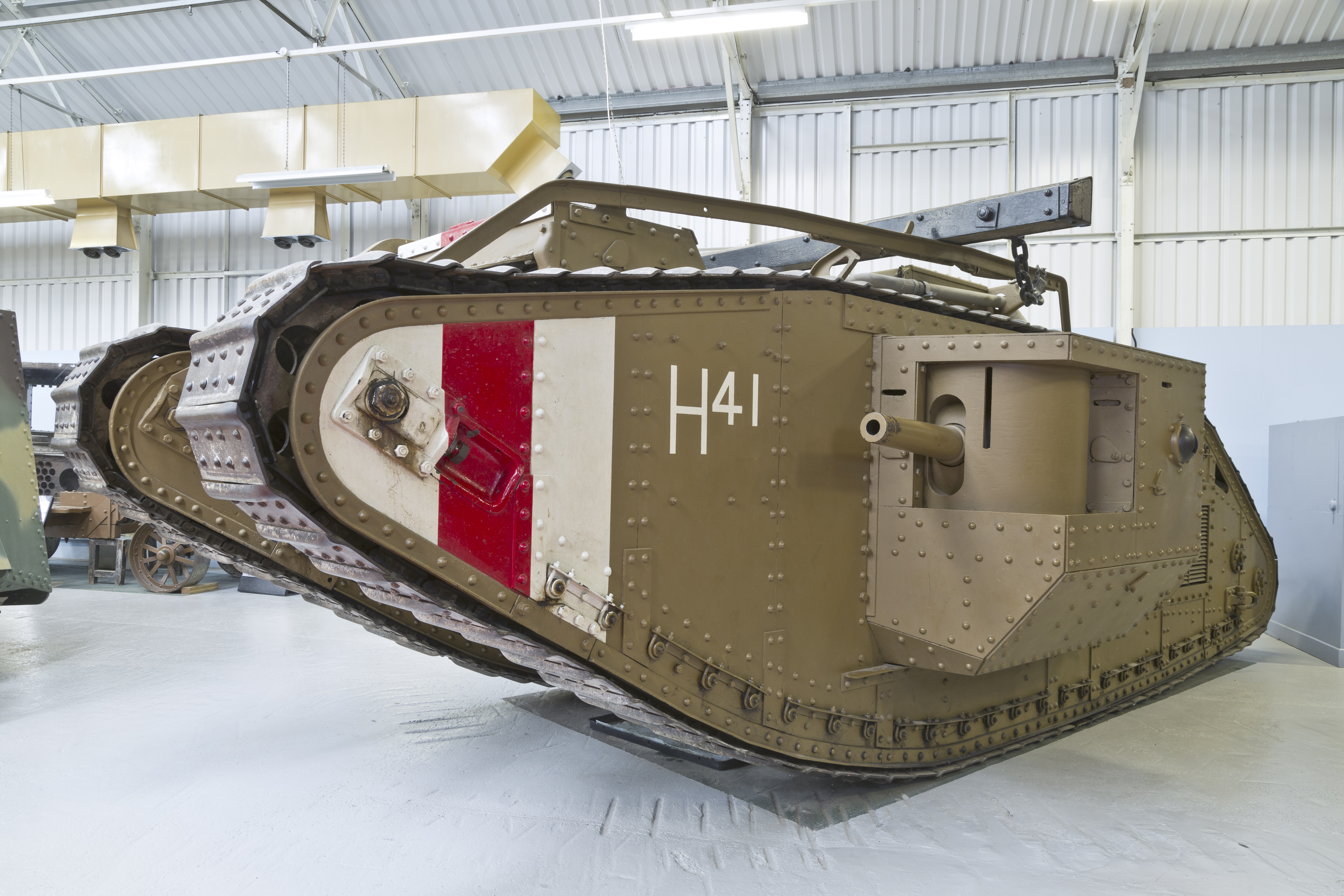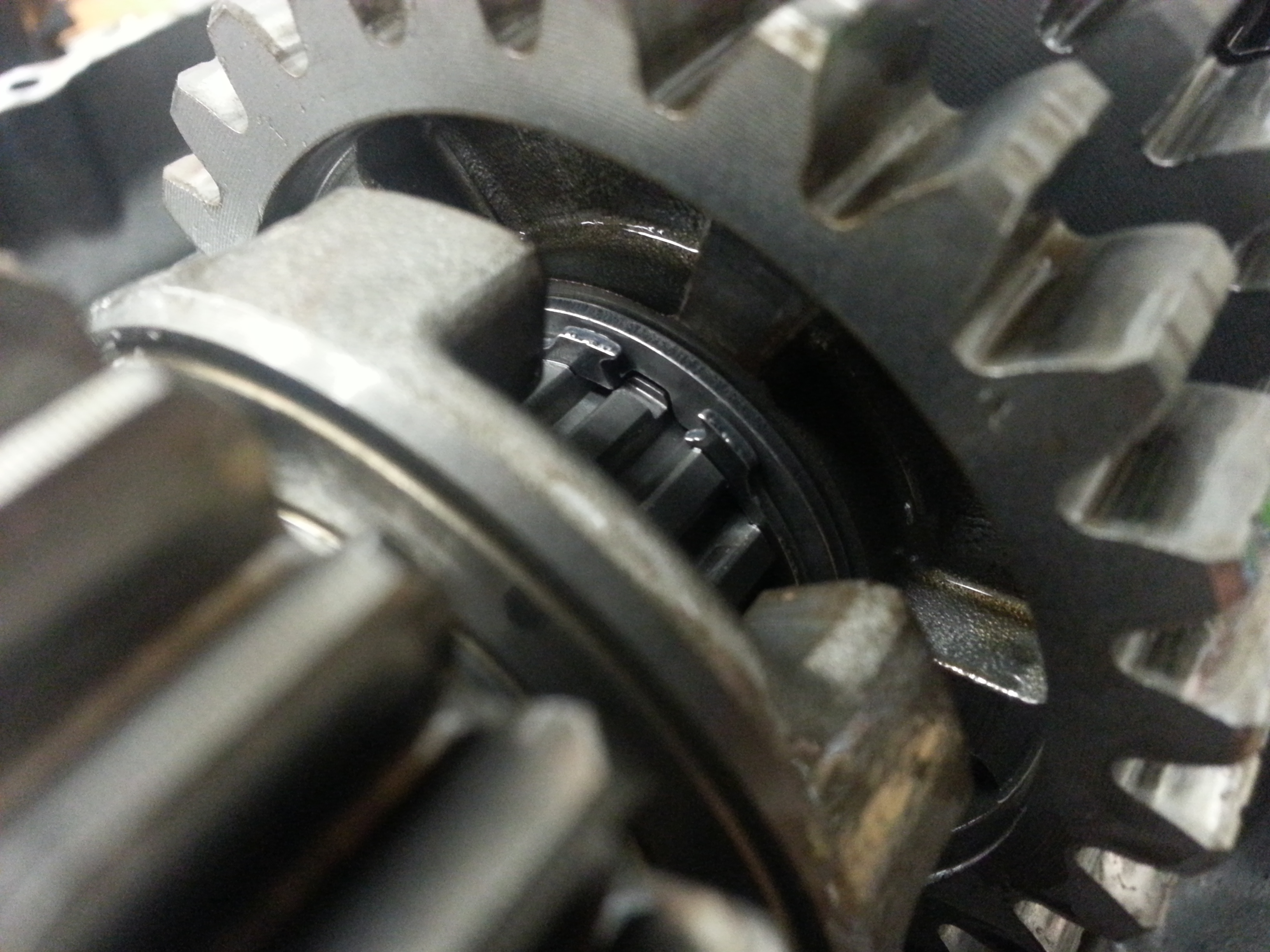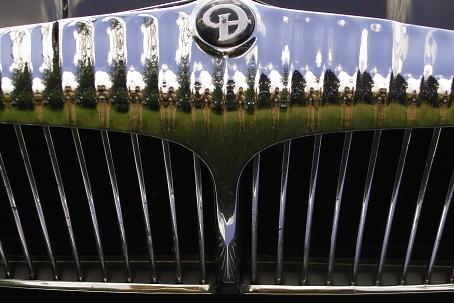|
Flying Elephant
The Flying Elephant was a proposed super-heavy tank, planned but never built by the British during World War I. Development After the last order for an additional fifty Mark I vehicles in April 1916, it was not certain that any more tanks were to be produced. Everything would depend on the success of the new weapon. William Tritton, co-designer and co-producer of the Mark I, thought he already understood what would prove to be its main weakness. A direct hit by a shell would destroy the vehicle, a major drawback on a battlefield saturated with artillery fire. Tritton decided to design a tank that would be immune to medium artillery fire in April 1916. Tritton was unsure what this would entail. He did not know how thick the armour should be to ensure complete protection. The same month Lieutenant Kenneth Symes began to test 2 inch (51 mm) armour plate by firing at it with various captured German guns. In June, this programme was expanded by testing several types of plate at ... [...More Info...] [...Related Items...] OR: [Wikipedia] [Google] [Baidu] |
The Tank Museum
The Tank Museum (previously The Bovington Tank Museum) is a collection of armoured fighting vehicles at Bovington Camp in Dorset, South West England. It is about north of the village of Wool and west of the major port of Poole. The collection traces the history of the tank. With almost 300 vehicles on exhibition from 26 countries it is the largest collection of tanks and the third largest collection of armoured vehicles in the world.The ''Musée des Blindés'' in France has a collection of 880 armoured vehicles, although it includes fewer tanks than Bovington. It includes Tiger 131, the only working example of a German Tiger I tank, and a British First World War Mark I, the world's oldest surviving combat tank. It is the museum of the Royal Tank Regiment and the Royal Armoured Corps and is a registered charity. History The writer Rudyard Kipling visited Bovington in 1923 and, after viewing the damaged tanks that had been salvaged at the end of the First World War, recommended ... [...More Info...] [...Related Items...] OR: [Wikipedia] [Google] [Baidu] |
Medium Mark A Whippet
The Medium Mark A Whippet was a British tank of the First World War. It was intended to complement the slower British heavy tanks by using its relative mobility and speed in exploiting any break in the enemy lines. Development and production history On 3 October 1916 William Tritton, about to be knighted for developing the Mark I, proposed to the Tank Supply Committee that a faster and cheaper tank, equipped with two engines like the Flying Elephant, should be built to exploit gaps that the heavier but slow tanks made, an idea that up till then had been largely neglected. This was accepted on 10 November and approved by the War Office on 25 November. At that time the name for the project was the ''Tritton Chaser''. Traditionally, the name ''Whippet'' (after the fast-running dog breed) is attributed to Sir William himself. Actual construction started on 21 December. The first prototype, with a revolving turret taken from an Austin armoured car — the first for a British tank ... [...More Info...] [...Related Items...] OR: [Wikipedia] [Google] [Baidu] |
Differential (mechanics)
A differential is a gear train with three drive shafts that has the property that the rotational speed of one shaft is the average of the speeds of the others, or a fixed multiple of that average. Functional description The following description of a differential applies to a traditional rear-wheel-drive car or truck with an open or limited slip differential combined with a reduction gearset using bevel gears (these are not strictly necessary; see spur-gear differential): Thus, for example, if the car is making a turn to the right, the main ring gear may make 10 full rotations. During that time, the left wheel will make more rotations because it has farther to travel, and the right wheel will make fewer rotations as it has less distance to travel. The sun gears (which drive the axle half-shafts) will rotate at different speeds relative to the ring gear (one faster, one slower) by, say, 2 full turns each (4 full turns relative to each other), resulting in the left wheel maki ... [...More Info...] [...Related Items...] OR: [Wikipedia] [Google] [Baidu] |
Gearbox
Propulsion transmission is the mode of transmitting and controlling propulsion power of a machine. The term ''transmission'' properly refers to the whole drivetrain, including clutch, gearbox, prop shaft (for rear-wheel drive vehicles), differential, and final drive shafts. In the United States the term is sometimes used in casual speech to refer more specifically to the gearbox alone, and detailed usage differs. The transmission reduces the higher engine speed to the slower wheel speed, increasing torque in the process. Transmissions are also used on pedal bicycles, fixed machines, and where different rotational speeds and torques are adapted. Often, a transmission has multiple gear ratios (or simply "gears") with the ability to switch between them as the speed varies. This switching may be done manually (by the operator) or automatically (by a control unit). Directional (forward and reverse) control may also be provided. Single-ratio transmissions also exist, which simply chan ... [...More Info...] [...Related Items...] OR: [Wikipedia] [Google] [Baidu] |
Dog Clutch
A dog clutch (also known as a positive clutch or dog gears) is a type of clutch that couples two rotating shafts or other rotating components by engagement of interlocking teeth or dogs rather than by friction. The two parts of the clutch are designed such that one will push the other, causing both to rotate at the same speed and will never slip. In engineering, a "dog" is a tool or device used to lock two components in relation to each other. Dog clutches are used where slip is undesirable and/or the clutch is not used to control torque. Without slippage, dog clutches are not affected by wear in the same way that friction clutches are, but result in shock when shafts of different speeds are engaged. For this reason they are best used when sudden starting action is acceptable and the inertia of the system is small. Dog clutches are used inside constant-mesh manual transmissions to lock different gears to the rotating input and output shafts. A synchromesh arrangement ensures s ... [...More Info...] [...Related Items...] OR: [Wikipedia] [Google] [Baidu] |
Kilowatt
The watt (symbol: W) is the unit of power or radiant flux in the International System of Units (SI), equal to 1 joule per second or 1 kg⋅m2⋅s−3. It is used to quantify the rate of energy transfer. The watt is named after James Watt (1736–1819), an 18th-century Scottish inventor, mechanical engineer, and chemist who improved the Newcomen engine with his own steam engine in 1776. Watt's invention was fundamental for the Industrial Revolution. Overview When an object's velocity is held constant at one metre per second against a constant opposing force of one newton, the rate at which work is done is one watt. : \mathrm In terms of electromagnetism, one watt is the rate at which electrical work is performed when a current of one ampere (A) flows across an electrical potential difference of one volt (V), meaning the watt is equivalent to the volt-ampere (the latter unit, however, is used for a different quantity from the real power of an electrical circuit). : ... [...More Info...] [...Related Items...] OR: [Wikipedia] [Google] [Baidu] |
Daimler Company
The Daimler Company Limited ( ), prior to 1910 The Daimler Motor Company Limited, was an independent British motor vehicle manufacturer founded in London by H. J. Lawson in 1896, which set up its manufacturing base in Coventry. The company bought the right to the use of the Daimler name simultaneously from Gottlieb Daimler and Daimler-Motoren-Gesellschaft of Cannstatt, Germany. After early financial difficulty and a reorganisation of the company in 1904, the Daimler Motor Company was purchased by Birmingham Small Arms Company (BSA) in 1910, which also made cars under its own name before the Second World War. In 1933, BSA bought the Lanchester Motor Company and made it a subsidiary of Daimler Company. Daimler was awarded a Royal Warrant to provide cars to the British monarch in 1902; it lost this privilege in the 1950s after being supplanted by Rolls-Royce. Daimler occasionally used alternative technology: the Knight engine which it further developed in the early twenti ... [...More Info...] [...Related Items...] OR: [Wikipedia] [Google] [Baidu] |
Caterpillar Track
Continuous track is a system of vehicle propulsion used in tracked vehicles, running on a continuous band of treads or track plates driven by two or more wheels. The large surface area of the tracks distributes the weight of the vehicle better than steel or rubber tires on an equivalent vehicle, enabling continuous tracked vehicles to traverse soft ground with less likelihood of becoming stuck due to sinking. Modern continuous tracks can be made with soft belts of synthetic rubber, reinforced with steel wires, in the case of lighter agricultural machinery. The more common classical type is a solid chain track made of steel plates (with or without rubber pads), also called caterpillar tread or tank tread, which is preferred for robust and heavy construction vehicles and military vehicles. The prominent treads of the metal plates are both hard-wearing and damage resistant, especially in comparison to rubber tyres. The aggressive treads of the tracks provide good trac ... [...More Info...] [...Related Items...] OR: [Wikipedia] [Google] [Baidu] |
Flying Elephant - Bovington - 2
Flying may refer to: * Flight, the process of flying * Aviation, the creation and operation of aircraft Music Albums * ''Flying'' (Grammatrain album), 1997 * ''Flying'' (Jonathan Fagerlund album), 2008 * ''Flying'' (UFO album), 1971 * ''Flying'', by Bae Seul-ki * ''Flying'', by Chas & Dave * ''Flying'', by The Hometown Band Songs * "Flying" (Beatles song), 1967 * "Flying" (Bryan Adams song), 2004 * "Flying" (Cast song), 1996 * "Flying" (Chas & Dave song), 1982 * "Flying", by Anathema from ''A Natural Disaster'' * "Flying", by Badfinger from '' Straight Up'' * "Flying", by Cory Marks from the 2022 extended play ''I Rise'' * "Flying", by James Newton Howard from the film ''Peter Pan'' * "Flying", by Living Colour from ''Collideøscope'' * "Flyin'", by Prism from ''See Forever Eyes'' Other uses * ''Flying'' (magazine), a monthly publication * ''Flying'' (film), a 1986 drama film * "Flying" (''The Good Place''), an episode of the American comedy television series * ''F ... [...More Info...] [...Related Items...] OR: [Wikipedia] [Google] [Baidu] |
Machine Gun
A machine gun is a fully automatic, rifled autoloading firearm designed for sustained direct fire with rifle cartridges. Other automatic firearms such as automatic shotguns and automatic rifles (including assault rifles and battle rifles) are typically designed more for firing short bursts rather than continuous firepower, and are not considered true machine guns. As a class of military kinetic projectile weapon, machine guns are designed to be mainly used as infantry support weapons and generally used when attached to a bipod or tripod, a fixed mount or a heavy weapons platform for stability against recoils. Many machine guns also use belt feeding and open bolt operation, features not normally found on other infantry firearms. Machine guns can be further categorized as light machine guns, medium machine guns, heavy machine guns, general purpose machine guns and squad automatic weapons. Similar automatic firearms of caliber or more are classified as autocannons, rat ... [...More Info...] [...Related Items...] OR: [Wikipedia] [Google] [Baidu] |
Sponson
Sponsons are projections extending from the sides of land vehicles, aircraft or watercraft to provide protection, stability, storage locations, mounting points for weapons or other devices, or equipment housing. Watercraft On watercraft, a sponson is a projection that extends outward (usually from the hull, but sometimes other parts of the vessel) to improve stability while floating, or to act as a securing point for other equipment. Vessels with unstable body shapes or unevenly distributed weight are likely to feature sponsons to help prevent capsizing or other instabilities. On many vessels, these projections from the main body of the vessel can be attached and removed quickly and fairly easily. Canoes and kayaks sometimes feature sponson attachments as well, for stability in rough waters. These differ from outriggers, which extend a significant distance away from the body of the craft, and are employed on craft designed for open waters. A sponson's terminus is close to the cr ... [...More Info...] [...Related Items...] OR: [Wikipedia] [Google] [Baidu] |







